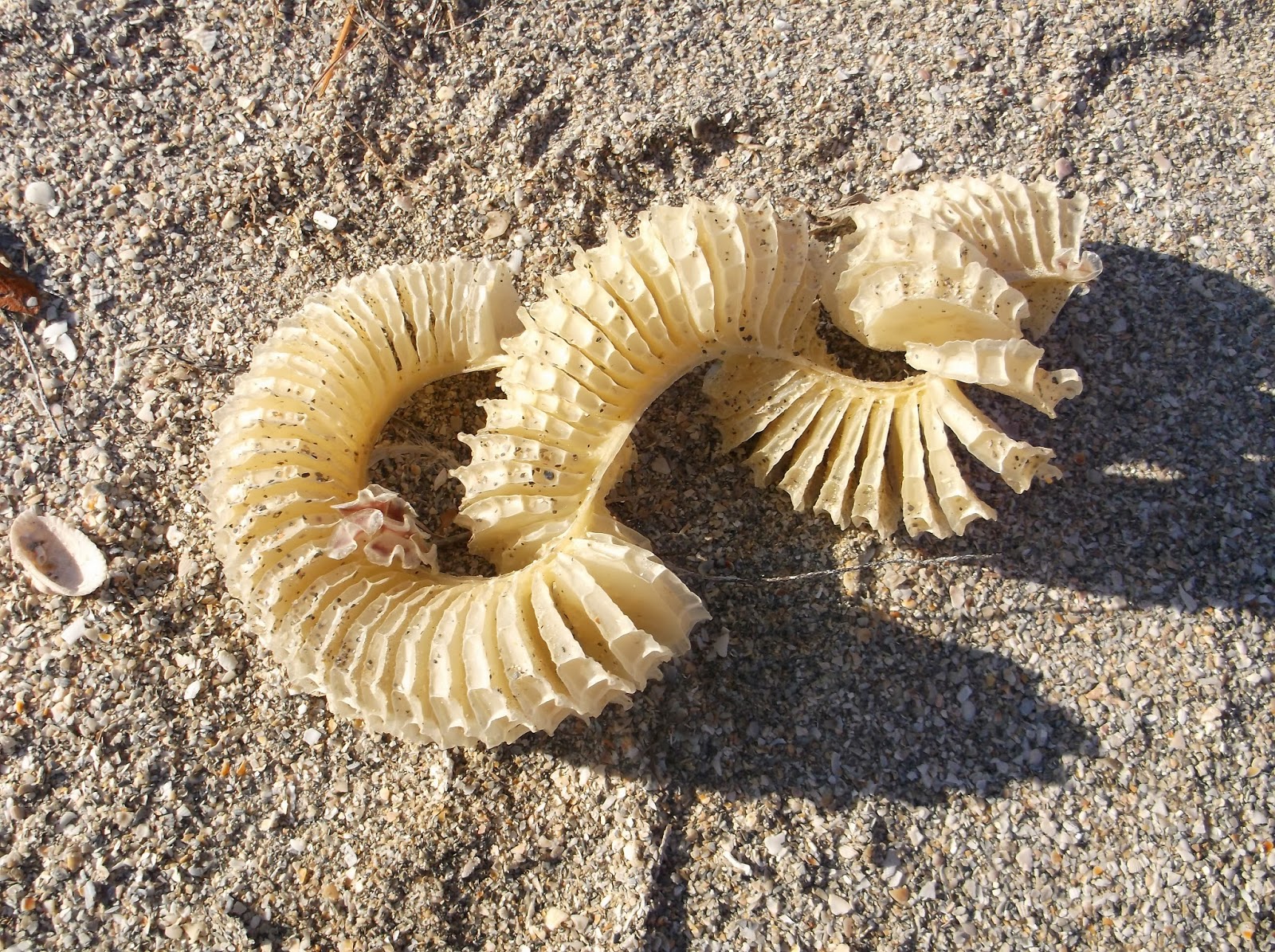Did you know that Venice, Florida is known as the Shark Tooth Capital of the World? I'm not sure why soo many teeth can be found along the beaches of Venice but I do know that shark can lose up to 30,000 teeth in a lifetime. Unlike us humans, sharks have rows of teeth, one right behind the other. When a shark loses a tooth, the one behind it fills in the gap. Wouldn't it be nice to have an endless supply of teeth? Below is a picture of a sand tiger's pearly whites...
 |
| Notice the rows of teeth |
 |
| Used for collecting sand and shells |
A homemade screen used for sifting
Using my aunt's blue wire basket :)
Overall, the wire basket worked well for finding shark teeth. I would stand in waist deep water, scoop up some sand, gently sway the basket back and forth under the water while the sand and small debris washed away. I found at least one tooth for every 2 to 3 scoops. Once, I even found a fish!
I'm not sure how many teeth I actually collected but I am happy with what I found. If you quickly scroll back up to the picture with all the teeth on it, take a look at the right hand corner of the picture and you will notice that I also found some stingray tooth plate sections.
 |
| A closer look at some of the teeth |
Above is a closer look at some of the teeth I found. They come in all shapes, sizes, and colors. Fossilized shark teeth are usually reddish/brown, black, or bluish/grey depending on the type of minerals found in the sediment that they were buried in. One of these days, I hope to find a free afternoon so I can sit down with a guide book and identify what type of teeth I have. Apparently, all of the teeth belonging to a individual species of shark look the same (unlike our teeth consisting of incisors, canines, premolars, and molars). The only noticeable difference between the teeth in a shark's mouth is the size, not the shape. Once I learn the difference between the shapes of the more common shark teeth found in Florida, it shouldn't take long to group them in to categories based on species.
 |
| Common fossils found |
Aunt Pat and I spent almost the entire day in the water searching for teeth. The waves were gentle and the sun was bright, making it a relaxing and therapeutic activity. For excitement, we were constantly visited by a group of string rays swimming up and down the coast line in search of shrimp. At first, I was a bit intimidated by the string ray presence but I quickly learned that the string ray didn't care about me. I watched in amazement as a group of 12 string rays swam directly towards me, split into two groups about 3 feet away from me, pass by me on both sides, and regrouped a few feet past me.
I also learned string rays like to jump out of the water. If you've never seen string rays jumping watch this 14 second clip I found on YouTube!
Overall, it was a great day. We stayed until sunset, packed up, and headed home. Here are a few more photos of my beach trip...
 |
| South Brohard Beach |
 |
| Uncle Cliff flying my new kite. He did great! |
 |
| Shells and teeth left behind as the tide goes out to sea |
 |
| Sunset :) |
Linking up with Really Random Thursday at Live A Colorful Life














